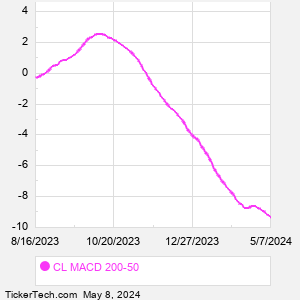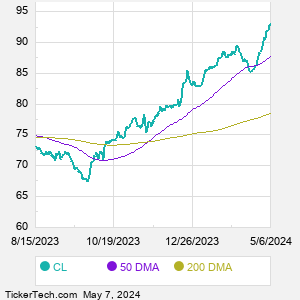Colgate-Palmolive manufactures and markets a variety of products in the U.S. and around the world. Co. has two product segments: Oral, Personal and Home Care; and Pet Nutrition. Co.'s Oral, Personal and Home Care products include toothpaste, toothbrushes, mouthwash, pharmaceutical products, bar soaps and others. Through its Hill's Pet Nutrition segment (Hill's), Co. engages in specialty pet nutrition products for dogs and cats. Hill's markets pet foods under two brands: Hill's Science Diet, which is a range of products for everyday nutritional needs; and Hill's Prescription Diet, which is a range of therapeutic products to help nutritionally manage disease conditions in dogs and cats.
When researching a stock like Colgate-Palmolive, many investors are the most familiar with Fundamental Analysis — looking at a company's balance sheet, earnings, revenues, and what's happening in that company's underlying business. Investors who use Fundamental Analysis to identify good stocks to buy or sell can also benefit from CL Technical Analysis to help find a good entry or exit point. Technical Analysis is blind to the fundamentals and looks only at the trading data for CL stock — the real life supply and demand for the stock over time — and examines that data in different ways. One of those ways is to calculate a Simpe Moving Average ("SMA") by looking back a certain number of days. One of the most popular "longer look-backs" is the CL 200 day moving average ("CL 200 DMA"), while one of the most popular "shorter look-backs" is the CL 50 day moving average ("CL 50 DMA"). A chart showing both of these popular moving averages is shown on this page for Colgate-Palmolive. Comparing two moving averages against each other can be a useful visualization tool: by calculating the difference between the CL 200 DMA and the CL 50 DMA, we get a moving average convergence divergence indicator ("CL MACD"). The CL MACD chart, in conjunction with the chart of the moving averages, basically helps in visualizing how the moving averages are showing convergence (moving closer together), or divergence (moving farther apart). |



